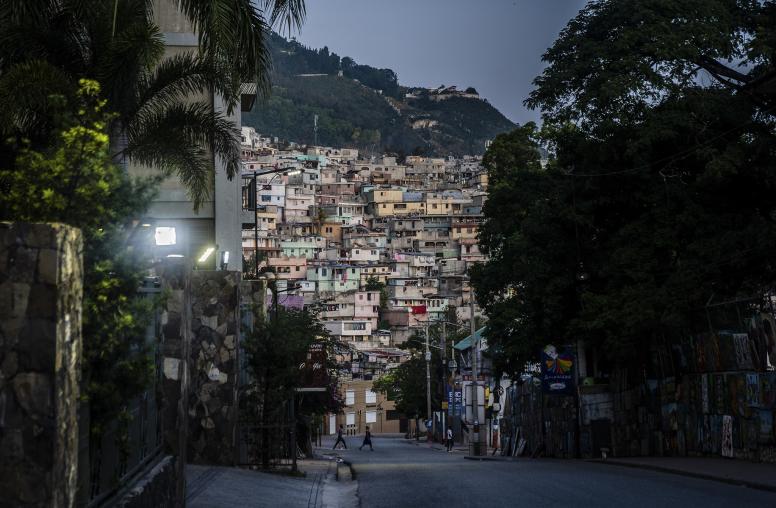As Colombia’s rebels and the government negotiate in Havana to end 50 years of war, a group of women around the country from different religions is laying the groundwork for what they hope will come next: the reconciliation needed to forge a true, lasting peace.

The 300 members of the Ecumenical Group of Women Peacebuilders are exploring the role they and their religious institutions might play in a post-accord nation, one that has experienced some form of political violence for most of the past 100 years. Established in 2008 with the support of USIP, GemPaz began as a collaboration between Catholic and Evangelical Protestant women and has grown into an ecumenical project for peace, social justice, human rights and social transformation.
“These are folks who demonstrate that things can change.”
While the draft agreements for the guerrillas’ demobilization call for a range of remedial steps, GemPaz, the Spanish acronym for the group, believes the hard work of social reconstruction must take place person-to-person at the local level. It’s a task the organization is positioning itself to tackle, with members at work in eight of Colombia’s 32 “departments” and in Bogota.
Women of faith have a special place in cementing the peace, Mónica Velásquez, a psychologist and GemPaz member said in a panel discussion on July 15 at USIP. In GemPaz’s work, the women’s shared spiritual approach has allowed communication across class, political and geographic lines that can create a model for the rest of Colombian society in a post-conflict setting, she said.
``Women have dreams and goals they want to realize and even have hope of a country at peace,’’ Velasquez said. ``This is the inspiration and spark for the work of GemPaz.’’
The panel discussion, part of a USIP series called the Colombia Peace Forum that explores issues and potential solutions to further the peace process, took place as support for negotiations between the government and FARC rebels has fallen to an all-time low and public sentiment in the country increasingly favors a military solution. In early July, a group of 26 religious leaders of various faiths called on both sides to accelerate negotiations and offered to help lead the country toward reconciliation. The plea followed a government negotiator saying the talks were coming to an end because of renewed violence by the rebels. A few days later, the FARC declared a unilateral ceasefire, and on July 13 the government said it would reciprocate by “de-escalating military actions.” Once those decisions went into effect, discussions got back on track.
The mechanisms used by GemPaz to promote peacebuilding include psycho-social healing and restorative justice, a system of rehabilitating offenders through reconciliation with victims and communities rather than with punishment. The scale of the problem is signaled in draft agreements reached in Havana. They address the rights of more than 7.4 million registered victims – out of total population of about 46.7 million -- to truth, justice, reparations and guarantees that violations won’t be repeated.
Ginny Bouvier, a senior advisor for Latin American programs at USIP, leads the institute’s programs on Colombia, conducting workshops and offering other support for Colombian women and others who are rallying public backing for peace efforts and mediating local disputes related to the decades of violence.
Building a Network of Support
Norma Inés Bernal, a social worker who was a coordinator for human rights training in the violent north-central Magdalena Medio region, laid out how GemPaz approaches its mission. The group has established ties with women who belong to Catholic, evangelical and other churches and who have links with various networks and women’s groups, which in turn have ties to civil society organizations. That’s how GemPaz is planting the seed for a full-blown reconciliation program if the peace talks succeed, she said.
The group’s work includes arranging use of church spaces where people affected by violence, both as victims and aggressors, can meet and unburden themselves. They are partnering with other women to restore the social fabric at the community level and encouraging efforts to rebuild relations between government institutions and social organizations that have been fractured by armed conflict. They’re making a priority of developing local leaders and helping them strengthen their abilities to deal with individual victims, perpetrators and communities.
A key technique ready for expansion are Circles of Peace where “facilitated dialogue” takes place, said Velásquez , who spoke on the psycho-social component of peacebuilding. After a half century of conflict, large numbers of people are living with the personal effects of violence that might have occurred even a generation or two earlier, she said.
``From GemPaz we understand that when pain is given voice, the process builds personal and spiritual strength and creates resilience, as much in victims as in ex-combatants,’’ Velasquez said. ``When this process does not take place, feelings or shame and pain can generate more violence.’’
Susan Hayward, the director of Religion and Peacebuilding in the Center for Governance, Law and Society at USIP, said during the discussion that GemPaz is a natural outgrowth from the worldview of women and particularly women of faith. Women often draw on theologies and Bible accounts that support their role in peacebuilding. Women are also close to the pulse of their communities, she said. They experience more sharply such effects of conflict as sexual violence and struggle with the toll war takes on their ability to care for their families.
Colombians carry the weight of this history, said panelist James Patton, the executive vice-president of the Washington-based International Center for Religion and Diplomacy , who spent four years in the country doing human rights work.
“There is a profound lack of optimism in Colombia, and scant belief that something else is possible,” he said. “These are folks who demonstrate that things can change.”
Fred Strasser is a freelance writer and editor for USIP.


